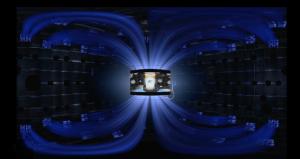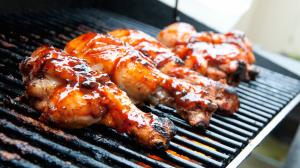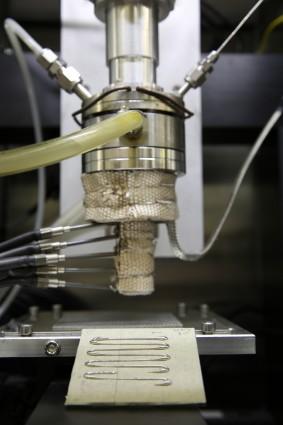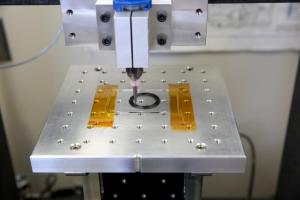LAB REPORT
Science and Technology Making Headlines
April 7, 2017


These images of the sun were captured at the same time by six channels on the SUVI instrument on board GOES-16 and show a large coronal hole in the sun’s southern hemisphere. Each channel observes the sun at a different wavelength, allowing scientists to detect a wide range of solar phenomena. Credit: NOAA
Here comes the sun
The first images from the Solar Ultraviolet Imager (SUVI) instrument aboard the National Oceanic and Atmospheric Administration's GOES-16 satellite captured a large coronal hole on the sun.
The Geostationary Operational Environmental Satellites (GOES) are part of NOAA's space weather monitoring fleet. GOES-16 launched late last year.
SUVI records full-disk images at six extreme ultraviolet (EUV) wavelengths every few minutes, where this data is used to better understand the effects of solar-produced EUV radiation on Earth and the near-Earth environments.
A Lawrence Livermore National Laboratory team developed multilayer mirrors for the SUVI instrument aboard GOES-16.

A shot at NIF is no easy feat.
Hit me with your best shot
The National Ignition Facility is the world’s largest and most energetic laser.
Preparing for a shot on the laser is no easy feat. The NIF shot director and a team of systems engineers prepare for a shot in the integrated control room where they are responsible for the operation, alignment and diagnostic functions of the giant laser system.
The control team must control 20 million joules of energy when a shot is taken.
See a shot in 360.


Marinating chicken before barbecuing could remove cancer-causing compounds.
Grilling to perfection
Marinades not only make grilled foods taste better, they also may make them safer.
A chemist at the Lawrence Livermore National Laboratory found that marinating chicken in a simple mixture of olive oil, cider vinegar, garlic, mustard, lemon juice, salt and brown sugar reduced carcinogenic compounds in the finished product by more than 90 percent.
Researchers don’t know why; they suspect that marinating draws out chemical precursors of carcinogens.


The direct metal writing approach incorporates an ingot that is heated until it reaches a semi-solid state before it's forced through a nozzle. As it cools, the material hardens to form a 3D metal structure.
Metal making is direct
The most popular metal printing processes, which use lasers to fuse together fine metal powder, have their limitations. Parts produced using selective laser melting (SLM) and other powder-based metal techniques often end up with gaps or defects caused by a variety of factors.
To overcome the drawbacks of SLM, Lawrence Livermore researchers, along with collaborators at Worchester Polytechnic Institute, are taking a wholly new approach to metal 3D printing with a process they call direct metal writing, in which semisolid metal is directly extruded from a nozzle.
The metal is engineered to be a shear thinning material, which means it acts like a solid when standing still, but flows like a liquid when a force is applied.


A carbon fiber composite ink extrudes from a customized direct ink writing (DIW) 3D printer, eventually building part of a rocket nozzle.
You can make anything with this stuff
Carbon fiber’s been waiting in the wings for years because it's so difficult to make in complex shapes. But with 3D printing, you could potentially make anything out of carbon fiber.
And Lawrence Livermore researchers have done just that. They became the first to 3D print aerospace-grade carbon fiber composites. The team printed several complex 3D structures through a modified direct ink writing (DIW) 3D printing process. They also developed and patented a new chemistry that could cure the material more quickly.
The resultant material, the researchers said, could be used to make high-performance airplane wings, satellite components that are insulated on one side or wearables that can draw heat from the body but don't allow it in.





